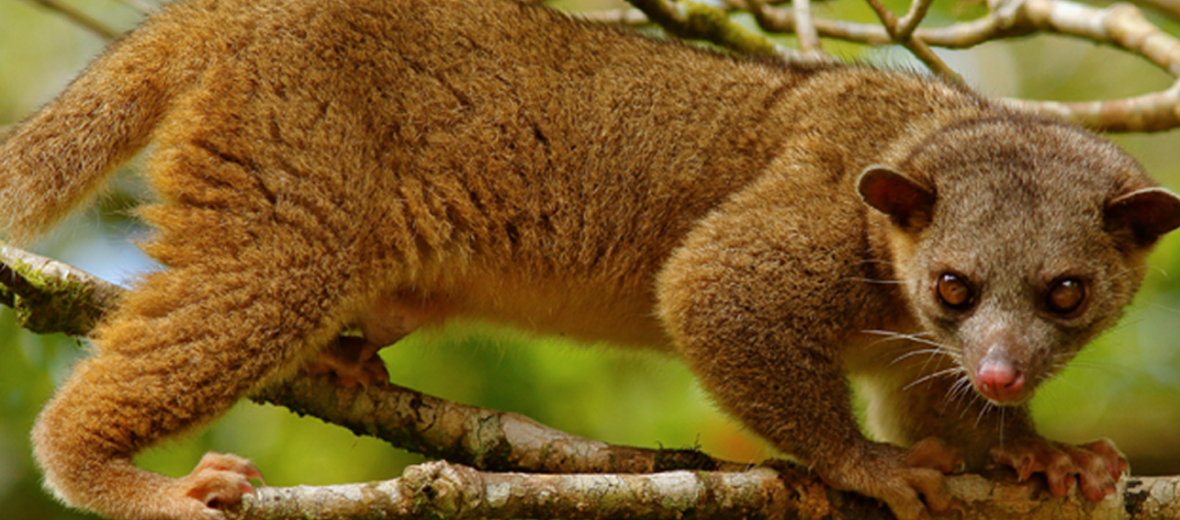
The kinkajou lives in tropical rainforests from the southern parts of Mexico down into Brazil. Its small feet have fingers that are a slightly webbed and come equipped with sharp claws. Dense, wool-like fur serves as a raincoat to help keep them dry in their rainy environment. The kinkajou’s tail is longer than its body, is thickly furred and subtly prehensile. These critters are listed as Least Concern by the IUCN.
First the Stats…
Scientific name: Potos flavus
Weight: Up to 10 lbs.
Length: Up to 2 feet, plus a 2 foot long tail
Lifespan: Up to 23 years
Now on to the Facts!
1.) Their name translates to ‘golden drinker’.
2.) Kinkajous are omnivores (eat plant and animal matter) that belong to the same group of animals as raccoons, olingos, coatis, and ringtails; called Procyonidae.
3.) They are 1 of only 2 known primarily carnivorous animals with prehensile tails.
4.) These critters are arboreal (live in trees) and have double jointed feet, made for climbing, that can rotate 180°.
5.) The kinkajou is nocturnal (active at night).
But wait, there’s more on kinkajou!
6.) Kinkajous use their 5 inch long, skinny tongue to extract nectar from flowers, thus contributing to pollination.
7.) The primary predators of kinkajous are ocelots, jaguars, foxes, tayras, and harpy eagles.
Did you know…?
Kinks are sometimes kept as pets but aren’t the best pet idea one could have as they can tend to spray to mark their territory. They are also nearly impossible to potty train. They are friendly but best left in the wild.
8.) They’re able to hiss, bark, scream, and make high-pitched squeaks. This animal is also known as “la llorona” or “crying woman” (in Spanish) due to the unusual noises it produces.
9.) Being a territorial creature. It will use glands located near their mouth, throat, and stomach to mark its territory.
10.) Reproduction lasts all year and results in 1 – 2 cubs.
Now a Short Kinkajou Video!
Also, check out the Critter Science YouTube channel. Videos added frequently!
Want to suggest a critter for me to write about? Let me know here.



